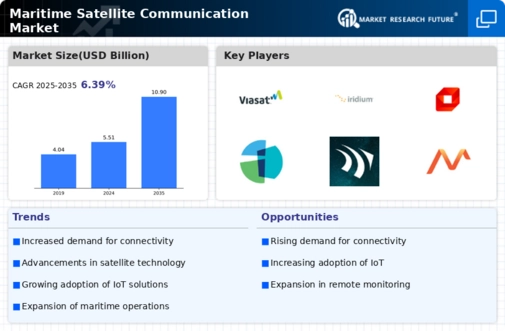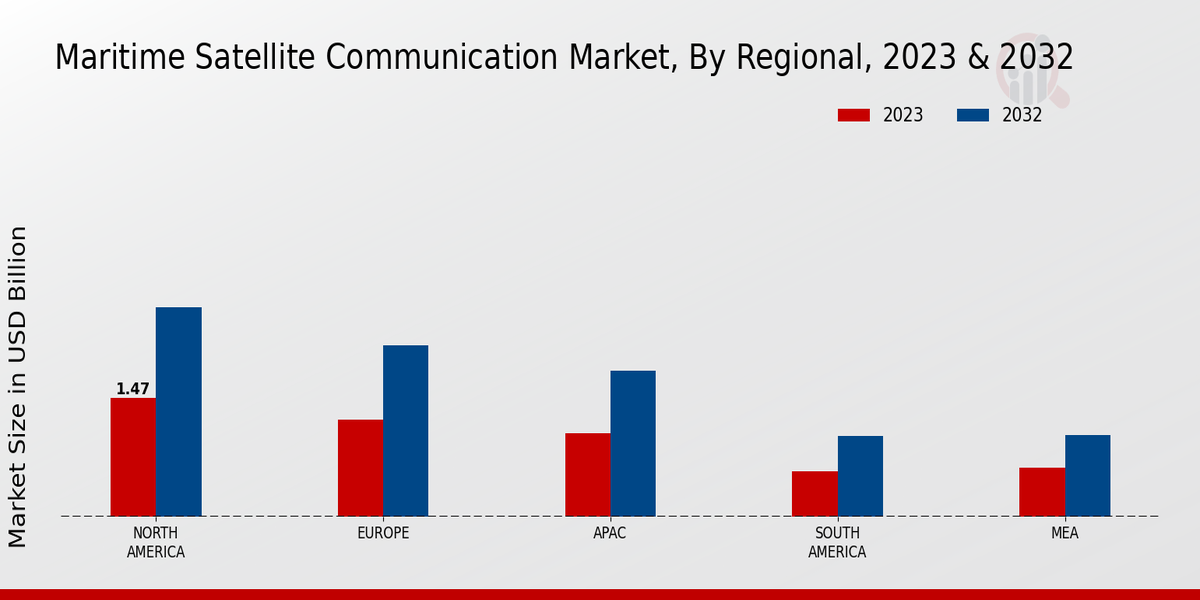Market Growth Projections
The Global Maritime Satellite Communication Market Industry is poised for substantial growth, with projections indicating a market size of 5.51 USD Billion in 2024 and an anticipated increase to 10.9 USD Billion by 2035. This growth trajectory suggests a compound annual growth rate of 6.39% from 2025 to 2035, reflecting the increasing reliance on satellite communication in maritime operations. The expansion of maritime trade, coupled with advancements in satellite technology, is likely to drive this growth, positioning the industry for a robust future.
Growth of the Maritime Industry and Trade
The growth of the maritime industry and global trade significantly impacts the Global Maritime Satellite Communication Market Industry. As international trade expands, the need for efficient and reliable communication systems on vessels becomes paramount. The increasing number of shipping routes and the rise in cargo volumes necessitate robust satellite communication solutions to ensure seamless operations. This trend is expected to contribute to a compound annual growth rate of 6.39% from 2025 to 2035. The expansion of the maritime sector underscores the importance of satellite communication in facilitating trade and enhancing operational efficiency.
Increasing Demand for Connectivity at Sea
The Global Maritime Satellite Communication Market Industry experiences a growing demand for reliable connectivity at sea. As maritime operations expand, vessels require uninterrupted communication for navigation, safety, and operational efficiency. This demand is driven by the need for real-time data exchange, which enhances decision-making processes. In 2024, the market is projected to reach 5.51 USD Billion, reflecting the industry's response to these connectivity needs. The integration of advanced satellite technologies enables shipping companies to maintain constant communication with their fleets, thereby improving overall operational performance and safety standards.
Regulatory Compliance and Safety Standards
The Global Maritime Satellite Communication Market Industry is influenced by stringent regulatory compliance and safety standards imposed by maritime authorities. These regulations necessitate the implementation of reliable communication systems on vessels to ensure safety and security at sea. Compliance with international maritime regulations, such as the Global Maritime Distress and Safety System, drives the adoption of satellite communication technologies. As maritime operators strive to meet these standards, the demand for advanced satellite communication solutions is likely to increase, further propelling market growth in the coming years.
Emergence of IoT and Smart Shipping Solutions
The emergence of Internet of Things (IoT) technologies and smart shipping solutions is transforming the Global Maritime Satellite Communication Market Industry. IoT applications enable vessels to collect and transmit data in real-time, enhancing operational efficiency and safety. Satellite communication systems are integral to the functioning of these smart solutions, allowing for continuous monitoring and data analysis. As the maritime industry increasingly adopts IoT technologies, the demand for satellite communication services is expected to rise. This trend highlights the potential for innovation and growth within the market as operators seek to leverage advanced technologies.
Technological Advancements in Satellite Systems
Technological advancements play a pivotal role in shaping the Global Maritime Satellite Communication Market Industry. Innovations in satellite technology, such as high-throughput satellites and low Earth orbit systems, enhance bandwidth and reduce latency. These improvements facilitate better communication services for maritime users, including shipping companies and offshore operators. As a result, the market is expected to grow significantly, with projections indicating a rise to 10.9 USD Billion by 2035. Enhanced satellite capabilities allow for more efficient data transmission, which is crucial for the increasing complexity of maritime operations.











